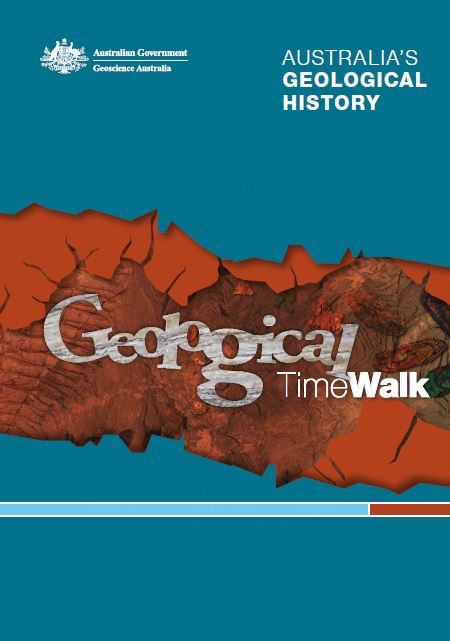fossil
Type of resources
Keywords
Publication year
Topics
-
This CD-ROM consists of 15 images and explanatory text detailing the nature of dinosaur fossils from Southern Australia as determined by scientists working along Australia's southeast coast. Find out about the dinosaurs that lived at polar latitudes between 120 to 110 million years ago and the fascinating methods they developed to cope with the climate of that region. The images include actual fossils discovered and reconstructions of dinosaurs and the plants and animals with which these dinosaurs were associated. Suitable for primary Years 5-6 an secondary Years 7-12.
-
This set consists of 15 slides and explanatory text detailing the nature of dinosaur fossils from Southern Australia, as determined by scientists working along Australia's southeast coast. Find out about the dinosaurs that lived at polar latitudes between 120 to 110 million years ago and the fascinating methods they developed to cope with the climate of that region. The images include actual fossils discovered and reconstructions of dinosaurs and the plants and animals with which these dinosaurs were associated. Also available on CD-ROM (catalogue item 39797) Suitable for primary Years 5-6 and secondary Years 7-12.
-
Learn about studying fossils (palaeontology) in this behind-the-scenes visit to the Commonwealth Palaeontological Collection. The formation of fossils is explained and different types of fossils are shown. The collection contains thousands of specimens including microscopic organisms called Foraminifera. Viewers learn that there are many scientific uses of fossils and this collection is a resource that scientists continue to study today.
-
This publication was developed as a guide to be used in conjunction with the Geoscience Australia TimeWalk but can also be used as a standalone guide on geological time. Each section in this publication discusses a single geological time interval, and outlines the major geological, climatic and biological events which occurred in that interval. Geological events include continental drift, the break-up and amalgamation of continental landmasses, mountain-building and major volcanic eruptions. Climatic events include changes in the content of the atmosphere and the occurrence of ice ages. Biological events include the evolution of major groups of organisms, the invasion of the land and major extinctions. Other events include changes in sea levels as well as major meteorite impacts. Each section also shows where rocks of a specific age are found in Australia and lists some of the continent's major mineral and energy resources formed during a particular time interval.
-
Much of the deep sea comprises soft-sediment habitats dominated by low abundances of small infauna, and traditional methods of biological sampling may therefore fail to sufficiently quantify biodiversity. During feeding and burrowing, many deep sea animals bioturbate the sediment, leaving signs of their activities called lebensspuren ('life traces'). In this study, we use three criteria to assess whether the quantification of lebensspuren from high resolution still images is an appropriate technique to broadly quantify biological activity in the deep sea: 1) The ability to differentiate biological assemblages between geographic regions; 2) the ability to reveal known biological patterns across environmental gradients; and 3) correlation with other methods of biological characterisation often used in the deep sea (e.g. video). Lebensspuren were quantified using a univariate measure of track richness and a multivariate measure of lebensspuren assemblages from the eastern (1712 images, 13 stations) and western (949 images, 11 stations) Australian margins. A total of 46 lebensspuren types were identified, including those matching named trace fossils. Assemblages were significantly different between the two regions, with five lebensspuren types accounting for over 95% of the differentiation (ovoid pinnate trace, crater row, spider feature, matchstick feature, mesh feature). Track richness in the combined margins dataset was correlated to depth, chlorin index (i.e. organic freshness), and possibly mud, although the strength of the relationships varied according to the dataset used. There was no relationship to total organic carbon. Lebensspuren richness from still images was significantly related to lebensspuren from video but not to occurrence of epifauna. Based on these results, the quantification of lebensspuren from still images seems an appropriate measure to broadly characterise biological activity in deep sea soft sediment ecosystems.
-
The black and white 55 page fossils resource contains information about what fossils are, what parts of living things become fossilised and the most common fossil groups. The process of fossilisation and geological time are also covered. 24 informative illustrated fact sheets cover a wide variety of plant, animal and trace fossils. Includes student activities suitable for primary Years 3-6 and secondary Years 7-10.
-
The 3D Models Bulk Set includes a class set of each of the following 3D paper models; - Nautiloid - Trilobite - Pterosaur - Triceratops - Volcano - Plate Tectonics Globe - Landslide - Slump
-
<p><b> Please note: This record has been made available internally for reference only</b> <p>PIMS is a search tool for discovery of survey and well data assets and physical samples held by the Geoscience Australia Repository. Data can be ordered and viewing of samples can be arranged via an online form. Although this is public data, fees are charged to cover the cost of transcription and delivery.
-
This collection consists of type specimens, illustrated or referred specimens which have been published in the scientific literature. Type specimens that have been published in literature of a wide variety of different macro and micro fossils. The Commonwealth Palaeontological Collection is a collection of type, illustrated referred or cited specimens of fossils which have been published in the scientific literature. This Collection was initiated by Federal Cabinet decision during the 1920s. When fossil specimens of any new species of animal or plant are found, for it to be of any future use in biostratigraphy, it of course must be analysed.
-
Legacy product - no abstract available


